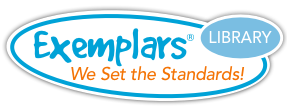Grade 2 - Place Value Unit
Standards covered:
- 2.2 Number and operations
-
2.2B
Use standard, word, and expanded forms to represent numbers up to 1,200.
-
2.2C
Generate a number that is greater than or less than a given whole number up to 1,200.
- 2.3 Number and operations
-
2.3A
Partition objects into equal parts and name the parts, including halves, fourths, and eighths, using words.
- 2.7 Algebraic reasoning
-
2.7B
Use an understanding of place value to determine the number that is 10 or 100 more or less than a given number up to 1,200.
The Place Value Unit involves understanding the relative position, magnitude and relationships within the numeration system in order to answer questions such as:
- How could you use base-10 blocks to show what the numerals in this number mean?
- How can you use the additive property of place value to decompose this number?
- What other way(s) can you use thousands, hundreds, tens, and ones to show this number without changing its value?
Summative Assessment Task
Students determine how many more seashells need to be found to reach a total of 1,000 seashells.
Instructional Tasks/Formative Assessments
Students determine if there are enough daisy seeds for all the seed packets.
Given a number of postage stamps, students determine how many more stamps are needed to fill all 100 pages of a stamp collection book.
Students determine if the boys have enough pennies saved to buy a video game.
Students determine which boy will be the first to finish a book of 700 pages.

The N/A classification refers to TEKS Standards that cannot be assessed through problem solving.
For this reason, tasks have not been included for these particular standards.
K.7A K.7B K.9B K.9C K.9D